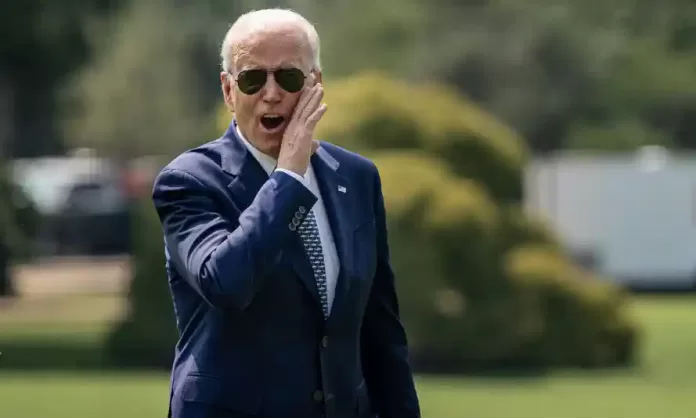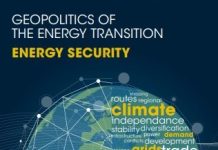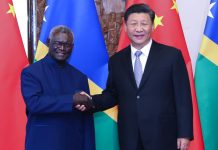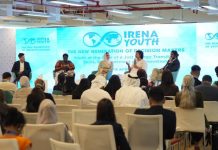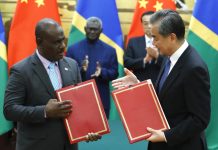Opinion by Gerard Finin and Terence Wesley-Smith
After decades of ambivalence, the United States plans to expand its footprint in the Pacific islands region to dimensions larger than at any time since the second world war.
But the Biden administration may be on the brink of embracing a flawed foreign policy initiative spanning almost one-third of the globe.
Legislation before Congress, proposes spending as much as US$1bn annually in the 14 sovereign Pacific island nations.
Policies address a laundry-list of issues, ranging from youth engagement, democratic governance, economic development, and public health, to climate change resilience, maritime security, and disaster preparedness.
The explicit purpose of this increased engagement is to counter challenges by China to U.S preeminence in the Pacific and beyond.It is problematic because it is motivated by security concerns not necessarily shared by island leaders, who see climate change, not China, as the major threat to Pacific futures.
Equally problematic, the initiatives are conceived in zero-sum terms, designed to undermine Chinese influence rather than address the critical needs and priorities of island nations themselves. Island leaders do not want to be forced to choose between China and the U.S, or to be played as pawns. Rather they wish to chart their own course. Sadly, what the architects of these initiatives fail to appreciate is that U.S policy could, through genuine consultations with island leaders, be crafted to achieve meaningful long-term engagement.
U.S efforts to integrate Pacific island states into the hard and soft power dimensions of its Indo-Pacific strategy accelerate the militarisation of the region, placing some island nations at greater risk in the event of conflict.
The sovereign Pacific island states are eager to attract Chinese investment, trade with the soon-to-be largest economy in the world, and employ Chinese-manufactured products. Yet this clearly does not equate with these countries, all democracies, becoming client states of China, adopting authoritarian forms of government, or permitting Chinese military facilities.
Beyond the undesirable consequences of great power competition, the proposed initiatives seek to make the region a U.S strategic priority by employing programs largely divorced from on-the-ground realities, an approach that will probably prove ineffective at best and self-defeating at worst.
First, there is no larger underlying rationale for these programs except to counter China. Without any basis in a coherent set of Pacific-based development needs, aspirations, goals, or best practices, the U.S is flying blind.
Second, rather than draw upon America’s comparative advantages, some proposed projects, such as those to improve transport connectivity and access to electricity, imitate China’s belt and road initiative, which has proved highly competitive delivering infrastructure development across the region. The more prudent alternative is to listen carefully to Pacific island leaders and focus on America’s strengths in fields such as higher education and public health, as well as collective action to address climate change and the Covid-19 pandemic.
Third, Pacific island nations already receive more aid per capita than any other region in the world, with limited capacity to take on additional projects. Although aid now constitutes one of the Pacific’s largest industries, the region has made little progress towards achieving the UN’s Sustainable Development Goals. Rather than offering more of the same, there is an urgent need for innovative thinking about regional development assistance.
Current U.S initiatives suggest a kneejerk approach to invigorating Pacific relations with a strategy unlikely to cement lasting engagement. The lack of meaningful consultation with island officials regarding these proposals is a major concern, and reflects a catch-22 dilemma for U.S policymakers. Proposed U.S policies recognise the need for deeper engagement with island leaders now, but until those relationships are strengthened by expanded diplomatic outreach and building trust, which will take time, the approach is likely to fail.
Although island leaders may be skeptical about the transactional nature of U.S interest in the region, they will be eager to explore the opportunities that Washington’s new engagement – and funding – will bring.
Some may even be tempted to play the China card to attract attention and leverage resources. The real danger both for the U.S and Pacific nations in making everything China-centric is that it can easily distract from robust long-term understanding in favour of shallow, short-term gains.
Focusing exclusively on countering China may also divert attention from shared democratic values, religious traditions, language, and popular culture embraced by Americans and Pacific Islanders alike. There is still time for Washington policymakers to go beyond dollar diplomacy to find more effective ways to build upon this common ground with Pacific island nations.
Gerard Finin is a former director of the Pacific Islands Development Programme, East-West Centre, Hawaii, and currently affiliated with Georgetown University’s Center for Australian, New Zealand, and Pacific Studies.
Terence Wesley-Smith is a former director of the Centre for Pacific Islands Studies, University of Hawaii at Manoa, and co-editor (with Graeme Smith) of The China Alternative: Changing Regional Order in the Pacific Islands (ANU Press, 2021).
SOURCE: THE GUARDIAN/PACNEWS






